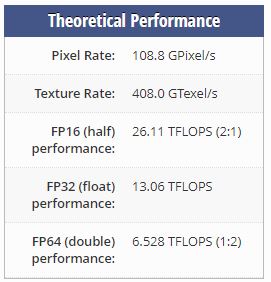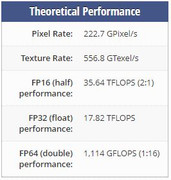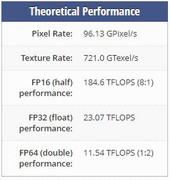Deleted member 66701
Deleted member 66701
Point is that you shouldn't limit one's self to OpenCL. With Nvidia you can use both CUDA and OpenCL.
OpenCL is open source though so the future and it's gaining more traction in academic circles.
Please remember that any mention of competitors, hinting at competitors or offering to provide details of competitors will result in an account suspension. The full rules can be found under the 'Terms and Rules' link in the bottom right corner of your screen. Just don't mention competitors in any way, shape or form and you'll be OK.
Point is that you shouldn't limit one's self to OpenCL. With Nvidia you can use both CUDA and OpenCL.
OpenCL is open source though so the future and it's gaining more traction in academic circles.
Linux is open source...
I use Linux on my computers.
AMD simply is faster than nvidia, no magic just hard science.

Yeah, and our uni uses Linux almost exclusively in engineering/computing.
Thank you all for the information.
I didn't realise there was such a drop in computing power with the newer GPU architecture. I have quite a healthy budget for this computer, so I could look at some of the professional cards if needed. My only concern with that would be gaming performance on the weekend or when not working.




Its fairly significant for example here is throughput on Radeon Pro VII:
And the same stats for W6800 (pro version of Navi 6800)
and for reference an MI100 - CDNA based Arcturus
So yes AMD's navi is fast for gaming but from a compute standpoint... not so much. Most sort of proper number crunching is double precision.
So pro VII on its 1:2 divider (normal 7 is 1:4) is still much faster at fp64 than the best Navi but doesn't get close to MI100. For some perspective radeon 7 has 6 times the fp64 throughput of a 2080ti. In say scientific double workloads that does this:
But you know... nowdays you either have a gaming card or a compute card not both but this is the reason I still run my 7. AMD have done exactly what NV did to improve gaming performance and that was cut out all the silicon reserved for compute out of GCN when designing NAVI which means more room for that sweet, sweet gaming performance.
I'm not saying AMD > NV but what I am saying is that you can pick the right card for your workload.
Thank you for the useful information. I may have to do rent a dedicated GPU instance from a cloud provider in the short term. My main desktop is completely broken but I don't want to buy a computer now as we are mid-cycle and I want a Zen 3 Threadripper / Threadripper Pro.
On a side note I wish companies would make it easier to research their products. I know they want you to buy from them but more detailed information would go a long way (at least for me) in terms of trust.
That's exactly what I'm upgrading to now, I'm going from the 1950x to the 3960x, I wanted to wait until the new TR but it looks like now is the time so for me the 3960x is probably the sweet spot. My rig will be 3960x, 64gb 3466 (8x8), 6800xt and the second rig which I use for some opencl workloads is the wifes rig with the 7 in it which I used to have in mine, thats a ryzen 5 3600x, 16gb 3200, Radon VII.
Day 1 I noticed the bandwidth difference between the cards, it is getting better with drivers (I think they are improving that infinity cache) but there is only so much a 256bit bus can do. When you compare bandwidth the 7 has double the bandwidth (at stock, overclocked the VII would pull ahead even more) than a 6800xt has, when the card is under load (read being absolutely hammered) that extra bandwidth on the 7 makes for a still silky smooth desktop experience whereas the same cannot be said for the 6800xt under the exact same load. The 7 might be the very last all round card we see in a long time, its the only gaming card I know of that can even use the pro drivers, after all it is for all intents and purposes an Instinct MI50.
Agree with you on the research point. Not many people really cared that VII was a compute monster because 99% of people just wanted a gaming card, that's what AMD were touting it as until they said it was for content creation and started allowing the use of pro drivers, although they did disable a few features to differentiate it from the pro VII which is identical silicon with 1:2 divider on pf64 rather than 1:2.
crossfire
90% of repliesThere are plenty of deep learning frameworks that support opencl, matlabs has opencl frameworks, pluggins, wrappers and toolboxes for all kinds of deep learning projects. I guess the real questions OP needs to aks is what kind of ML projects? What are you trying to achieve? Whats the right technology for the job?
You dont buy first and decide later. What you do is outline the work, tools used etc and then buy to fit the kind of projects you want to do. @op opencl is basically the open source equivalent of cuda on NV so is where you would be looking. Mind you if you are serious then 6800xt (approx 1.2tflop fp64) radeon 7 (3.3tflop fp64)... where amd used to smash it with a one architecture does it all is no longer really true really what you want is a radeon 7 (mi50)... a true compute card cut down for the masses.

That's exactly what I'm upgrading to now, I'm going from the 1950x to the 3960x


